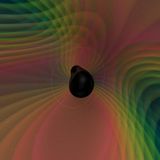RECENT ARTICLES

Neutrinos Reveal Final Secret of Sun’s Nuclear Fusion
Physicists have filled in the last missing detail of how nuclear fusion powers the Sun, by catching neutrinos emanating from the star’s core.The detection confirms decades-old theoretical predictions that some of the Sun’s energy is made by a chain of reactions involving carbon and nitrogen nuclei. This process fuses four protons together into a helium nucleus, releasing two neutrinos—the lightest known elementary particles of matter—as well as other subatomic particles and copious amounts of energy. This carbon-nitrogen (CN) reaction is not the Sun’s only fusion pathway—it produces less...…Physicists have filled in the last missing detail of how nuclear fusion powers the Sun, by catching neutrinos emanating from the star’s core.The detection confirms decades-old theoretical predictions that some of the Sun’s energy is made by a chain of reactions involving carbon and nitrogen nuclei. This process fuses four protons together into a helium nucleus, releasing two neutrinos—the lightest known elementary particles of matter—as well as other subatomic particles and copious amounts of energy. This carbon-nitrogen (CN) reaction is not the Sun’s only fusion pathway—it produces less...WW…

Mathematicians urge colleagues to boycott police work in wake of killings
Thank you for visiting nature.com. You are using a browser version with limited support for CSS. To obtainthe best experience, we recommend you use a more up to date browser (or turn off compatibility mode inInternet Explorer). In the meantime, to ensure continued support, we are displaying the site without stylesand JavaScript.AdvertisementYou have full access to this article via your institution.The tide of reckoning on systemic racism and police brutality that has been sweeping through institutions — — has reached universities’ normally reclusive mathematics departments. A group of...…Thank you for visiting nature.com. You are using a browser version with limited support for CSS. To obtainthe best experience, we recommend you use a more up to date browser (or turn off compatibility mode inInternet Explorer). In the meantime, to ensure continued support, we are displaying the site without stylesand JavaScript.AdvertisementYou have full access to this article via your institution.The tide of reckoning on systemic racism and police brutality that has been sweeping through institutions — — has reached universities’ normally reclusive mathematics departments. A group of...WW…

This Black-Hole Collision Just Made Gravitational Waves Even More Interesting
Gravitational-wave astronomers have for the first time detected a collision between two black holes of substantially different masses—opening up a new vista on astrophysics and on the physics of gravity. The event offers the first unmistakable evidence from these faint space-time ripples that at least one black hole was spinning before merging, giving astronomers rare insight into a key property of these these dark objects.“It’s an exceptional event,” said Maya Fishbach, an astrophysicist at the University of Chicago in Illinois. Similar mergers on which data have been published all took...…Gravitational-wave astronomers have for the first time detected a collision between two black holes of substantially different masses—opening up a new vista on astrophysics and on the physics of gravity. The event offers the first unmistakable evidence from these faint space-time ripples that at least one black hole was spinning before merging, giving astronomers rare insight into a key property of these these dark objects.“It’s an exceptional event,” said Maya Fishbach, an astrophysicist at the University of Chicago in Illinois. Similar mergers on which data have been published all took...WW…
- Total 3 items
- 1